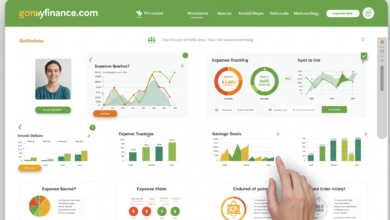10 Main Objectives of Resource Management

Organizations use resources like employees, equipment, facilities and contractors amongst others to achieve their business goals. As businesses become increasingly more people-centric, managing this valuable resource or human capital is of utmost importance. Resource management, especially human resource management, now plays a key role in helping organizations reach their company objectives. Resource management works to ensure that these organizational objectives are cohesive with employee development. This is a strategic function and requires careful implementation by formulating policies, hiring people and integrating employer-employee interests. As employees grow and enhance their skills, the organization will grow too.
What Is Resource Management?
Businesses have limited resources and they invest in hiring, training and developing the skills of their employees to create a talent pool. The competencies and skills of these resources then need to be tapped to their maximum potential. Smart resource utilization is crucial in ensuring the overall efficiency, sustainability and profitability of the business.
Resource management is a strategic and integral function of any business, especially if it has a matrix structure and operates across geographies. Simply put, resource management enables a business to optimally utilize its varied resources and enhance profitability. It is the process of planning, scheduling and allocating the right resources to the right project task, at the right cost and time. This ensures that resources (people, equipment, facilities, etc) are all utilized effectively and efficiently.
Resource management includes resource scheduling, resource allocation, resource planning and forecasting, capacity planning, business reporting and more.
Main Objectives of Resource Management
Businesses manage their various tangible and intangible resources effectively through the process of resource management. But there is much more to resource management than just planning and assigning the right resources to the right tasks. Proper resource management can help create a balanced resource schedule, forecast project costs and resources requirements, and improve overall profitability. Organizations are increasingly using resource management software with integrated high-performing tools and applications that allow them to manage all their resources effectively and efficiently.
The 10 main objectives of resource management are:
- Planning for the resources that may be required – Managers need to make sure that resources with the right competencies and skills are available for the planned projects. Resource management, especially that of human resources, ensures that there are well-trained and well-motivated employees available for current projects as well as for those in the pipeline.
- Allocating and scheduling resources efficiently – Resources have to be allocated across projects and scheduled such that there is no over-scheduling or under-scheduling, and everyone has a balanced schedule. Managers must make sure that resources that are shared between projects are not double-booked and are allocated equitably across projects.
- Utilizing resources effectively – Resources must be utilized optimally, with none being either overworked or underutilized. Each resource has certain specialized skills and abilities, and these need to be employed efficiently for the success of the project and improved profitability.
- Forecasting future resource requirements and making informed hiring decisions – Managers have to take stock of available resources before pitching for new projects. Hiring plans and hiring forecasts depend on this. Resource management allows managers to determine when to hire new resources and when to simply outsource tasks. They can then make informed hiring decisions, giving the company huge cost-saving benefits.
- Helping the organization achieve its business goals – Resource management software provides more accurate project estimates. Managers can estimate exactly what resources are required for a project and can calculate costs and better predict profits. They can also compare profitability from different combinations of resources and choose the best mix for maximum productivity.
- Providing more precise job costing while reviewing the project – This helps managers plan future projects better. Resource management enhances the scalability of the organization and its ability to grow in the future.
- Defining an organizational structure that pushes productivity – Employee capabilities and skills are to be nurtured and enhanced. By providing a work environment that encourages creativity and innovation, develops new skills and provides the opportunities to participate in management, the manager motivates the employees to put in their best. This increases productivity and thus maximizes returns on the investment the company is making on developing human resources.
- Creating a sense of team spirit and belonging among the workforce – By keeping communication channels open and respecting suggestions from team members, managers can develop effective coordination across departments. Keeping everyone in the loop on the progress of the project gives them a sense of ownership and motivates them to work diligently towards achieving the project goals on time.
- Identifying and satisfying the needs of employees – Management has to develop better working conditions and help employees maintain a healthy work-life balance. Employee-centric policies like fair salaries, health benefits, incentives, recognition, job security, etc. not only achieves high morale among employees but also help retain them. Technology changes all the time and employees must be reskilled constantly. Training and development programs that help them adapt to changes, and also support their career growth path, will further motivate employees. It will also create a sense of loyalty towards the organization.
- Adopting wider societal and ethical developments – Resource management ensures that the organization adapts to the rapidly-changing technological, societal and cultural practices that affect the work environment. Businesses must be flexible and manage change effectively by adopting new and innovative policies that integrate the interests of the employees as well as the business.
Benefits of Resource Management Software for an Organization
Resource management contributes significantly to improving both the bottom line and the top line of any business, and using the right tools makes this more streamlined. Here’s how resource management software benefits organizations:
- Makes resource planning and allocation more efficient – having all the data regarding resource availability in one place makes it easier for managers to allocate skilled resources efficiently across tasks and projects.
- Utilizes limited resources more effectively – scheduling and prioritizing tasks is more structured through the scheduling tool. This ensures that resource capacity is utilized optimally and there is minimum wastage.
- Helps avoid employee burnout – with an overview of how resources are being utilized, managers can prevent situations where some resources are double-booked and overworked, while others are sitting idle.
- Enables managers to forecast resource demand – they can assess the skill sets of available resources and those required for future projects. This helps them plan for bridging the gap between resource capacity and expected demand.
- Measures efficiency – having all data at his fingertips makes it easier for the project manager to review projects and measure how efficiently it was implemented and what the profitability was.
- Reduces cost – by giving managers the tool to allocate the right resource to the right task, at the right time and cost.
- Prepares businesses for unforeseen hiccups – having precise information on resource availability and costs helps managers be prepared with plan B in case of delays.
- Provides transparency – all team members can access all data on the project and monitor its progress. Managers can also determine if any resource has the bandwidth to take on new tasks.
- Identifies training needs – and helps managers develop programs to develop the employees.
How can a Resource Management Software like eResource Scheduler Help?
Resource management software like eResource Scheduler is designed to help organizations plan, schedule, allocate and utilize their resources optimally. Its tools enable project managers to assess available resources and their skills at a glance. It analyses and displays all the information required to help managers make critical decisions about taking on new projects and acquiring more resources. The software configures information on different types of projects and creates customized real-time reports. Working calendars make it possible to schedule resources effectively as per the available capacity. eResource Scheduler or the eRS Cloud resource management software allows managers to schedule any of the resources used by the organization, be it employees, equipment, contractors, or facilities. Any of these can be scheduled and managed efficiently to achieve the organization’s business goals.



